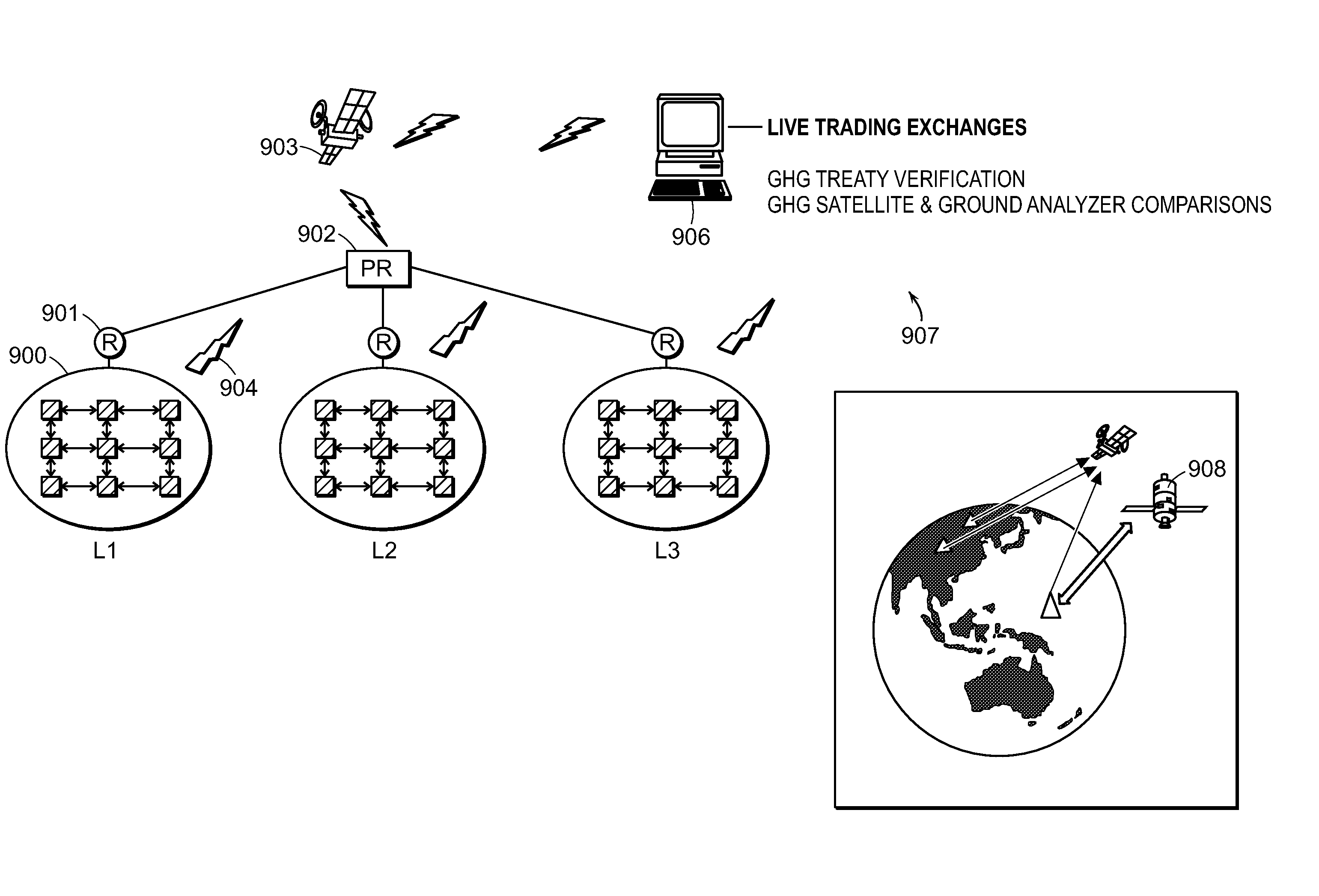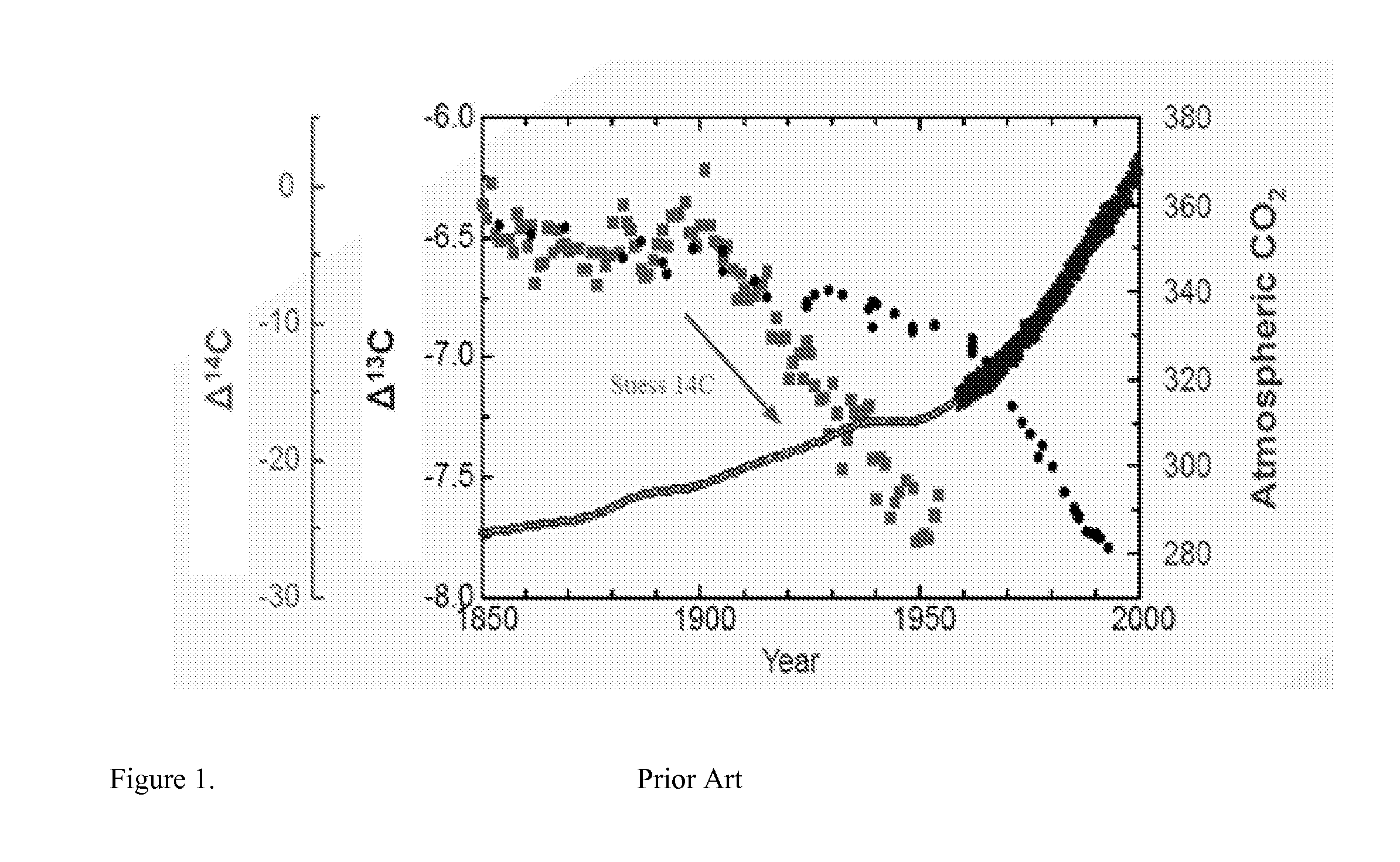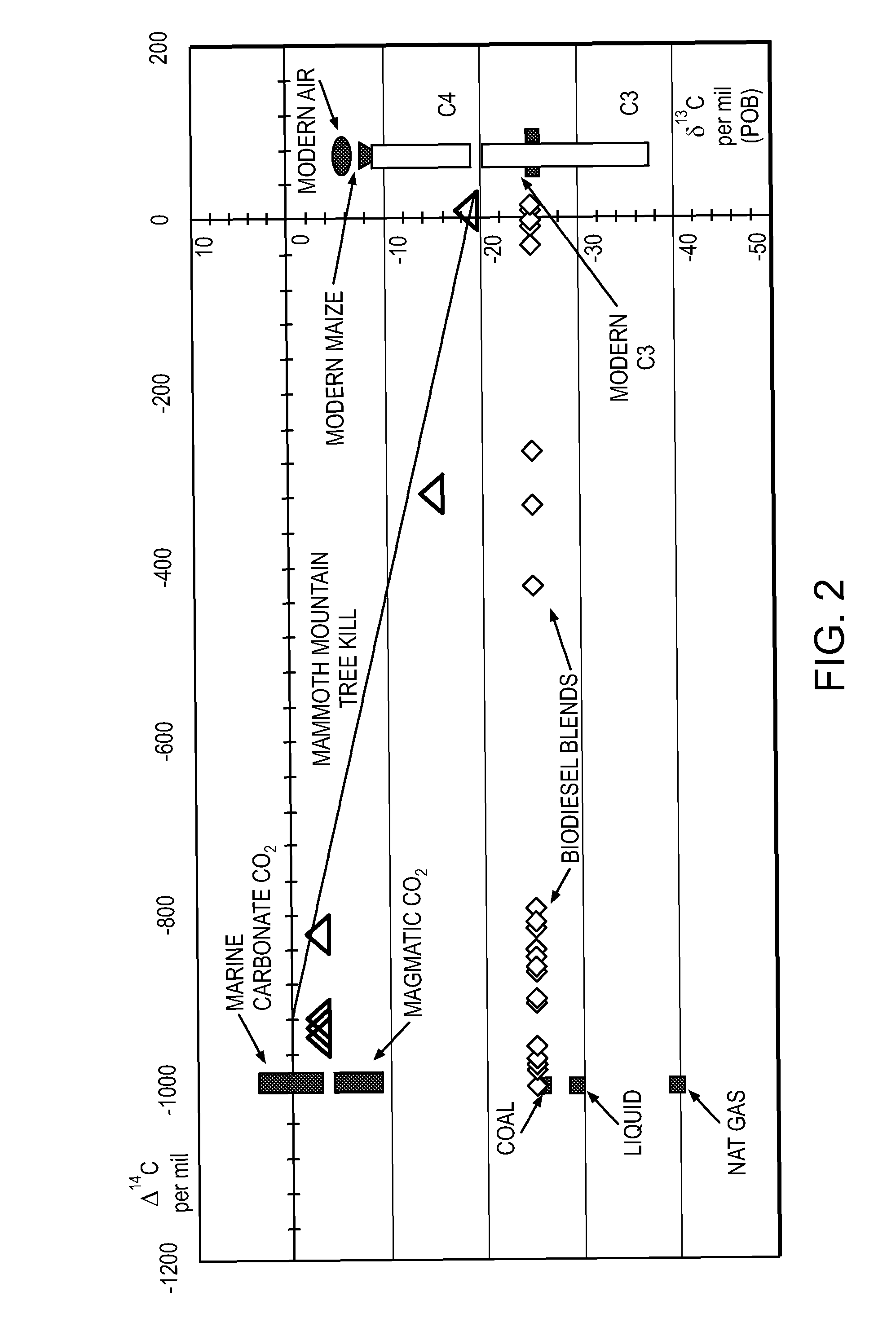System of systems for monitoring greenhouse gas fluxes
a greenhouse gas and system technology, applied in the field of system systems for monitoring greenhouse gas fluxes, can solve the problems of inability to account for carbon pricing mechanisms, and achieve the effects of reducing uncertainty in carbon trading, improving measurement accuracy, and reducing transaction uncertainty
- Summary
- Abstract
- Description
- Claims
- Application Information
AI Technical Summary
Benefits of technology
Problems solved by technology
Method used
Image
Examples
example of specific
Operation
[0300]The operation of one embodiment of the instrument for this example is as follows. With reference to FIG. 6, under the control of the data acquisition and control unit 8, power is applied from power supply unit 14 to pump 30. Since the IRGA 4, sample conditioning unit 18, isotope ratio analyzer 24 and the pump 30 are all connected with coupling tubes 5, 7, 9 in order to provide a continuous gas flow path, gas present at gas inlet tube 2 is drawn through all of the tubing-coupled components and out of vent tube 33. After the gas has passed through the IRGA 4, it passes through the sample conditioning unit 18 before entering the isotope ratio analyzer 24. As the gas is drawn through the oxygen scrubber 36 (as shown in FIG. 7), which constitutes the sample conditioning unit 18 in this embodiment, oxygen is removed. The oxygen-free gas continues to be drawn through coupling tube 7 and into the isotope ratio analyzer 24. After sufficient gas has been drawn through the isoto...
example 1
Forest Trading
[0329]Referring to FIG. 23 an example application of the system of systems is provided. While numerous locations within forests are measured and monitored for CO2 concentration, isotopic composition to determine and quantify source terms for CO2 to support carbon trading has not been reported. Specific cases are used herein for illustration.
[0330]Currently, forest carbon flux is estimated using a variety of forestry algorithms such as described previously by the Chicago Climate Exchange (CCX, www.ccx.com). However, research projects quantify carbon exchange on a limited basis. By way of background one of the projects is briefly described. The forest measured and monitored for carbon flux in this example is described in Barford, et al., 2001, and presents an opportunity to apply the system of systems to real data for forest carbon flux but lacking isotopic data to identify and quantify sources of CO2. The site, located in western Mass., is equipped with a tall tower ext...
example 2
Soil Carbon Trading
[0347]Referring to FIG. 30 another embodiment of the system of systems is provided. The soil reservoir of carbon far exceeds that of the standing biomass and in some respects may be more labile than that of the standing biomass. The warming of higher latitudes as predicted by models of the biosphere under increasing CO2 and consequent surface warming suggest that large amounts of previously sequestered carbon may be released. The release of carbon in the soil is primarily determined by soil moisture and temperature (Amundson et al., 2008) and thus is likely to be highly heterogeneous across the landscape depending on a host of factors. For these reasons soil flux should be determined and measured in a wide variety of sites to detect soil release in relation to global warming. Moreover, efforts to sequester carbon in soils ranging from agricultural to prairie lands are eligible for carbon trading offsets (CCX 2010) but are based on gross oversimplifications and est...
PUM
| Property | Measurement | Unit |
|---|---|---|
| frequency | aaaaa | aaaaa |
| frequency | aaaaa | aaaaa |
| frequency | aaaaa | aaaaa |
Abstract
Description
Claims
Application Information
 Login to View More
Login to View More - R&D
- Intellectual Property
- Life Sciences
- Materials
- Tech Scout
- Unparalleled Data Quality
- Higher Quality Content
- 60% Fewer Hallucinations
Browse by: Latest US Patents, China's latest patents, Technical Efficacy Thesaurus, Application Domain, Technology Topic, Popular Technical Reports.
© 2025 PatSnap. All rights reserved.Legal|Privacy policy|Modern Slavery Act Transparency Statement|Sitemap|About US| Contact US: help@patsnap.com



